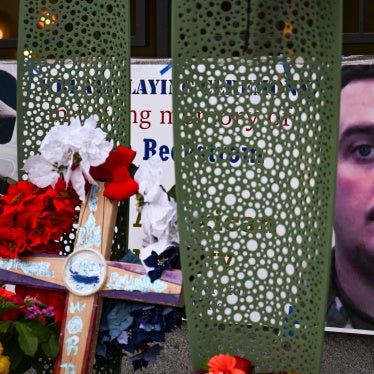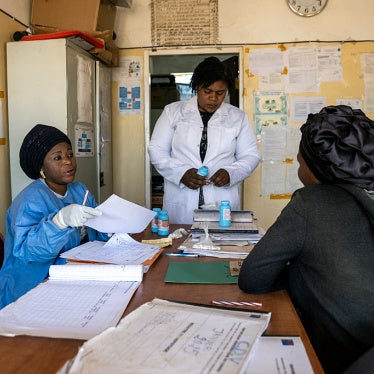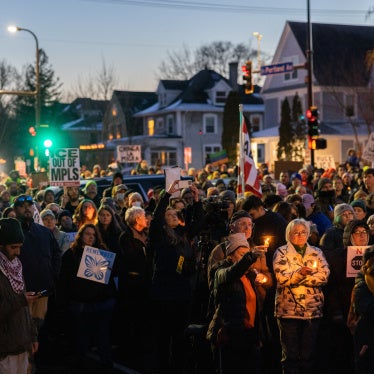A near-pandemic optimism over the Burmese government’s unprecedented promises of political, economic, and social reform has seized the international community. U.S. Secretary of State Hillary Clinton’s recent visit started a diplomatic stampede to Burma, with the foreign ministers of the United Kingdom, Japan, and China soon arriving to smell the air of reform.
But exactly what has happened in Burma to generate such excitement? What can realistically be achieved in a country long acknowledged to be one of the world’s most brutal, repressive states?
Thein Sein, a former general who took off his uniform to front the military-backed civilian government, became president of Burma last March. He came to power after a sham constitutional referendum in 2008, and crudely rigged general elections in November 2010. Under the new constitution, a bicameral national parliament and 14 regional and state assemblies have been formed.
Parliament has sat twice this year, pushing through a number of bills that purportedly guarantee freedom of assembly and the right to form unions, among other things, all of which had previously been imposed by military decree. Government ministers, many of them former generals, have debated issues in these forums. They also now give interviews to domestic and foreign media, face news conferences, and raise issues that have not been discussed in public for a long time, such as corruption, economic development, and ethnic rights.
From the perspective of the West, the crucial litmus test for Burma has been the freedom granted to the democratic leader, Aung San Suu Kyi, whose release one week after the 2010 elections caused euphoria among many Burmese. After an internal debate, she has registered her party, the National League for Democracy (NLD), and intends to stand in bi-elections in early 2012. Having previously been in almost complete isolation in house arrest, Suu Kyi now meets with the new president, senior government officials, a flurry of western plenipotentiaries, aid officials, and an inexhaustible array of foreign media.
Domestic Burmese media have found their long-repressed voice in reporting on issues of real import – though there are still many forbidden subjects – as well as splashing pictures of Suu Kyi across their front pages. Many people in major urban areas feel free to discuss politics and hitherto controversial issues, such as the contentious Chinese-funded Myitsone dam project in northern Kachin state, which the president suspended in September. The government has even announced peace talks to resolve its civil war with various ethnic insurgencies, ongoing since 1948, which has devastated the hinterlands and fuelled a culture of horrific human-rights abuses.
These developments raise many questions. Is this a genuine process of transition toward greater democratization, transparency, accountability, and a rejection of the isolationism of the past? Or is Burma entering a phase of faux reform, designed to preserve the military’s corporate interests through a façade of openness and ephemeral promises to tackle the core issues that have long divided the country?
We may soon know, as the government and political opposition hit a hard wall of reality. We may see a reaction from suspected hard-liners in the military and government, such as the reportedly recalcitrant vice-president, Tin Aung Myint Oo, or the disquietingly mute military commanders who still constitutionally control key ministries and one-quarter of all parliamentary seats. No one knows what such individuals are thinking, but they already appear to have held up the expected release of most of the country’s political prisoners.
Watching Suu Kyi and her party contest bi-elections next year may excite the imagination of some in Burma and abroad. But the opposition’s rising aspirations will soon run headlong into the formidable military-backed ruling party, the Union Solidarity and Development Party (USDP), which, nurtured since 1993 to eventually take power, commands over 70 per cent of parliamentary seats. The USDP is not going to simply melt away, yet few think Suu Kyi’s party would lose in a free and fair election.
How much genuine reform has there been? New laws on peaceful assembly and trade unions are promising in principle, but, for many years, the Burmese authorities have used the legal system as an instrument of repression, rather than an institution for justice. The test will be when Burmese attempt to exercise their rights under these laws. It is hard to see how – or for how long – an authoritarian state can allow freedom of expression, assembly, and association. Creating respect for human rights and the rule of law in a deeply corrupt and repressive system is likely to take a long time.
The biggest challenge may be ending the Burmese military’s rampant abuses against ethnic insurgents. Since June, the renewed conflict in Kachin state has displaced more than 30,000 people. The army has employed a brutally commonplace menu of abuses against civilians in conflict areas, including sexual violence, forced labour, torture, and summary executions, all the hallmark of Burmese army counter-insurgency operations.
Long-running armed conflict in eastern Burma, where nearly half a million people are internally displaced, has led at least 16 countries (including Canada) to call, in the past year, for a United Nations commission of inquiry into possible war crimes and crimes against humanity by all parties to the conflict. This initiative has been put on the back burner as countries watch developments in Burma. Yet these crimes are ongoing, and are a main driver of ethnic resistance. A sustainable solution to this complex war will be possible only when the Burmese government becomes serious about reining in its rampaging army, which has long enjoyed impunity for serious crimes.
For much of the Burmese population, the main challenge is to subsist. Five decades of military rule have led to a socio-economic collapse. Development indicators in health and welfare are among the lowest in Asia, despite the fact that the country has a wealth of natural and human resources. For many Burmese, change will be measured by the government’s efforts and success in addressing the dire economic mess. Yet the government persists in granting nearly one-quarter of the national budget to defence, while devoting a paltry amount to social needs. If the government is serious about reform, it must devote real attention and resources to health, education, and housing.
The daunting challenges of transforming the positive signals of change into realistic reform should sober any international observer. Western countries that have long combined targeted sanctions and humanitarian assistance to Burma should engage in a measured response to the changes under way. Canada, the U.S., the European Union, and Australia should not consider repealing sanctions until all political prisoners are released, basic freedoms are restored in practice, and the government ends its horrific abuses against ethnic-minority groups.
In the meantime, international observers should look for opportunities to assist the Burmese people directly, such as through increasing humanitarian assistance, supporting micro-financing schemes to assist farming communities, and offering technical assistance through the World Bank and International Monetary Fund to reform the economy and reduce corruption. Now is the time to press the government to engage in systemic reform based on respect for the rule of law and human rights.
David Scott Mathieson is the Senior Researcher, Asia Division, Human Rights Watch.








